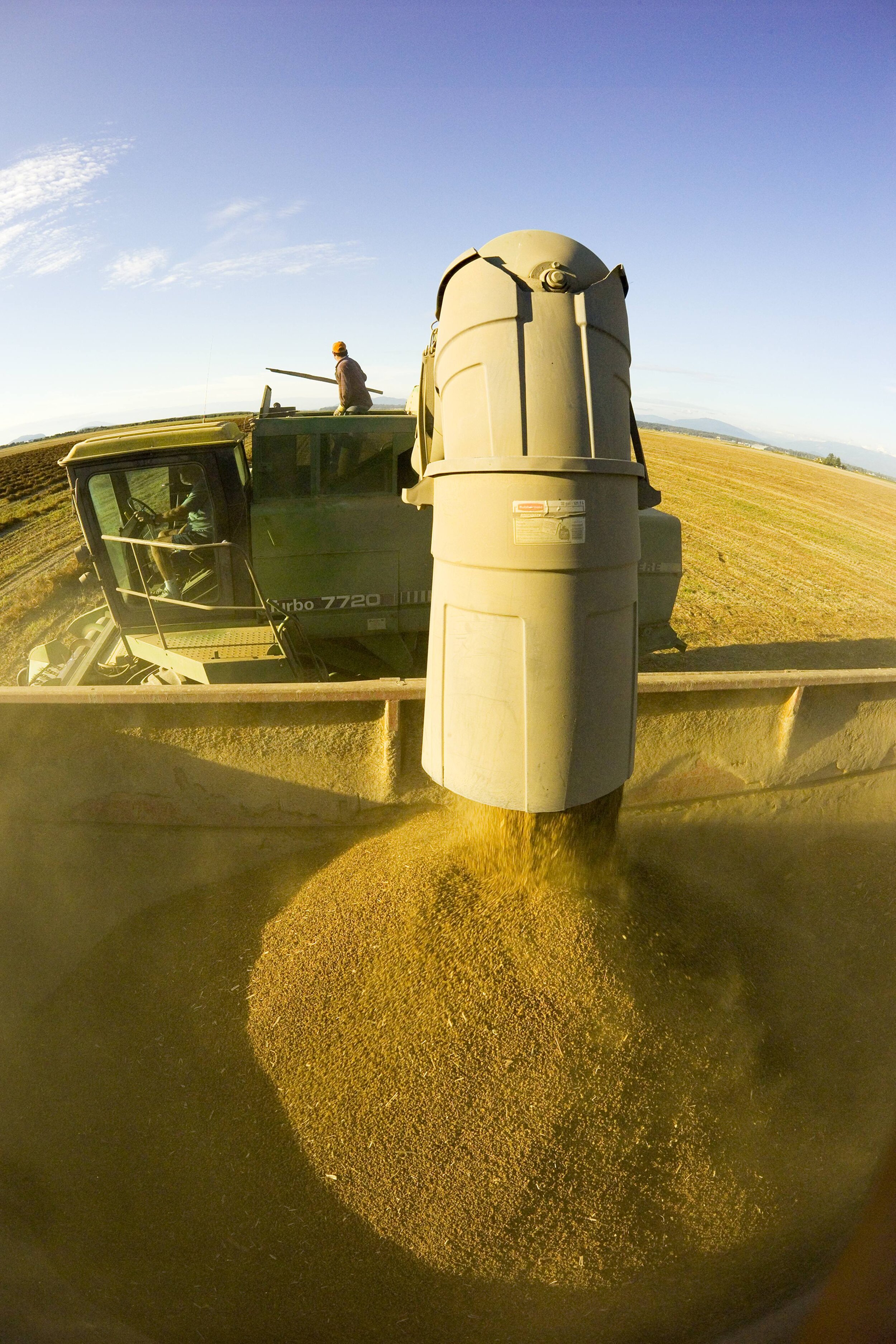Commercial Seed Production in Skagit County
“One acre of hybrid cabbage seed crop produces about 2,000 pounds of seed, which will plant 10,000 acres of cabbage.”
Consider the Seed
When compared to all the costs that go into successfully bringing a crop to market, the price of seed is a minor one. And yet… No matter how well prepared the seedbed is, how fertile the soil, or how careful the farmer is that all growth requirements are met, without high-quality, reliably-performing seed, those and all other efforts cannot make up what an inferior seed fails to give.
For a very long time, farmers in Skagit County have been growing high-quality seed that not only produce remarkable yields here, but all around the world.
Over 130 Years of Commercial Seed Production
In 1885, Alvinza Gardner Tillinghast founded the Tillinghast Seed Company in Padilla, Washington. The Pennsylvanian transplant initially purchased commercial seeds from east coast suppliers and repackaged his bulk orders for local sale. Before long, he relocated his business to LaConner and began contracting with local farmers to grow cabbage for seeds.
This was the start of an unbroken run of producing small-seeded vegetable seed crops that eventually would be sold in over 90 countries round the world.
A Very Serious Business
To illustrate the impact of seed production, consider this from WSU NWREC in Mount Vernon, “One acre of hybrid cabbage seed crop produces about 2,000 pounds of seed, which will plant 10,000 acres of cabbage.”
Those 10,000 acres can produce about 50 million pounds of cabbage. One acre’s output yields 50 million pounds of food.
The impact of this vital industry cannot be overstated.
It All Starts with the Seed Company
Agriculture is believed to have begun about 10,000 years ago. Even at that early date, or so it is believed, awareness of different traits in plants led to rudimentary selection for type.
The value of clean, unadulterated seed was well known. The trade in seeds—or barter in seeds—is thought to have developed in step with agriculture. Over millennia seed production expanded from that needed for subsistence to producing seeds in excess of immediate needs. By the middle of the 19th century, a business-oriented model began to emerge.
Today's seed companies, through public and private research and development, employ scientific expertise to produce seeds, particularly hybrid seeds that, according to the Seed Biotechnology Center at U.C. Davis, "serve as the delivery system not only for improved genetics but also new planting and production methods and crop protection strategies that improve overall efficiency of agriculture and reduce its environmental impact."
A Contractually-defined Industry
A farmer enters into an agreement with a seed company to grow either market seed, that is ultimately used for vegetable production, or stock seed that is grown for the specific production of seed crops. Saveseeds.org explains the system this way, "Commercial seed production within the state [Washington] is conducted under bailment contracts, whereby a seed company (bailor) provides a grower with the seed necessary to produce a crop.
The seed company retains ownership of the seed, the growing crop, and the resulting harvested seed. The growers (bailees) produce and harvest the crop and are paid the contract price for the resulting seed. Seed contracts typically specify quality criteria that a grower must meet to be paid for the crop. These conditions are germination percentage and purity."
Not an Easy Task
To maintain purity, seed crop fields must be separated from one another to prevent accidental cross-pollination.
Commercial seed production in Skagit County began with cabbage seeds, but it soon expanded to include many plants in the Brassica family. Among these were Brussels sprouts, cauliflower, Chinese cabbage, Chinese mustard, collard, cress, kale, kohlrabi, mustard, rutabaga, and turnip. In 2013, WSU Extension reported that 15 species of Brassica vegetable seed crops were grown at gross crop values ranging from $1500 to $6500 per acre. Other high-value crops grown for their seed, include spinach and table beets.
Exactly how these crops are grown for seed varies with the individual species. However, all require a high degree of expertise on the part of the farmer. To maintain purity, seed crop fields must be separated from one another to prevent accidental cross-pollination. How far apart they need be varies with the crop planted. The separation includes cross-compatible crops like beet and Swiss chard, as well as distinct varieties within one type of vegetable like cabbage.
Isolation is Protected and Regulated
. . . this is serious business reflecting the indispensable value of the vegetable seed industry in Skagit County.
Seed crop field isolation is achieved by bringing together seed companies and growers to "mutually map out where crops will be planted with the goal of preventing unwanted cross-pollination" (WSDA).
But any type of Brassica species, grown by anyone—even a home gardener—that is left to bloom and produce seeds is regulated within Washington State.
Per the WSDA, "If you intend to allow a Brassica crop to overwinter and produce seed, you must identify the location of that field on a public map." Skagit County has written protection into the county code (9.56) by "creating a mechanism to timely and reasonably provide notice and opportunity to cure as well as a mechanism to seek rapid judicial relief in the event that inter-landowner communication does not resolve the conflict arising from proximate Brassica crops."
In other words, this is serious business reflecting the indispensable value of the vegetable seed industry in Skagit County.
Next time in The Dirt, we'll explore why the industry is located here. Prepare to be impressed!
By Teresa Bennett: info@skagitonians.org
Photos by: Vince Streano & Dick Garvey



